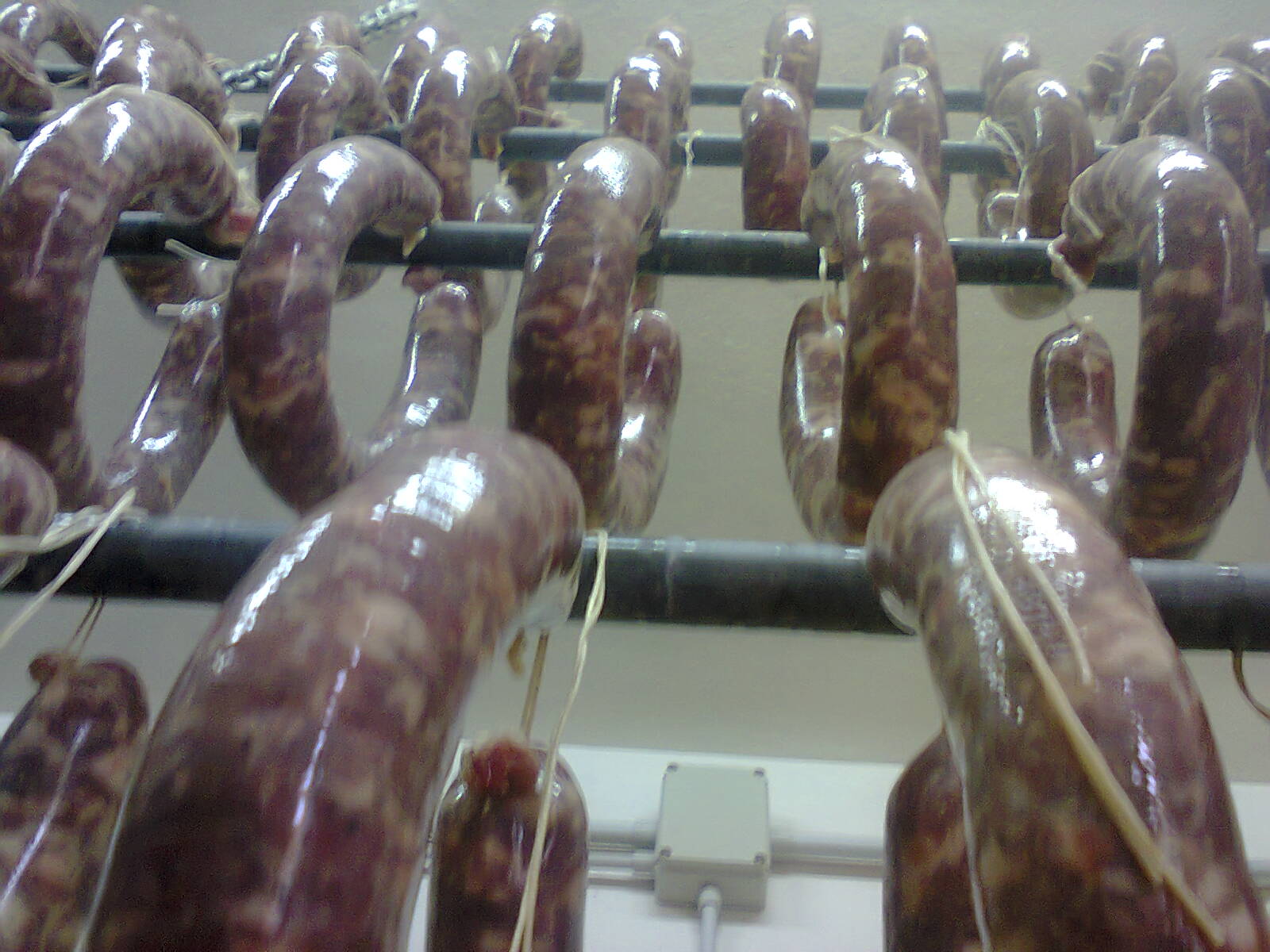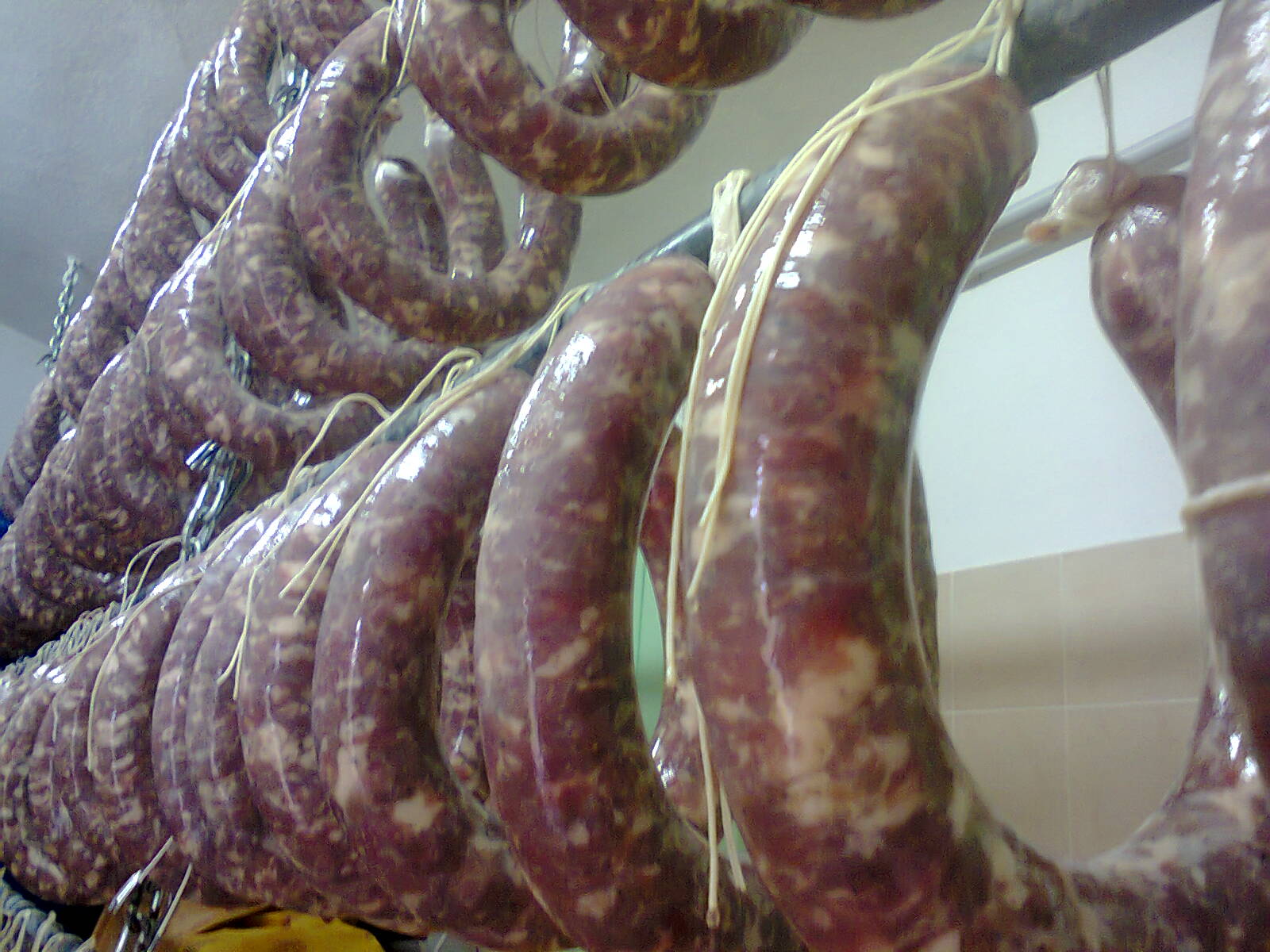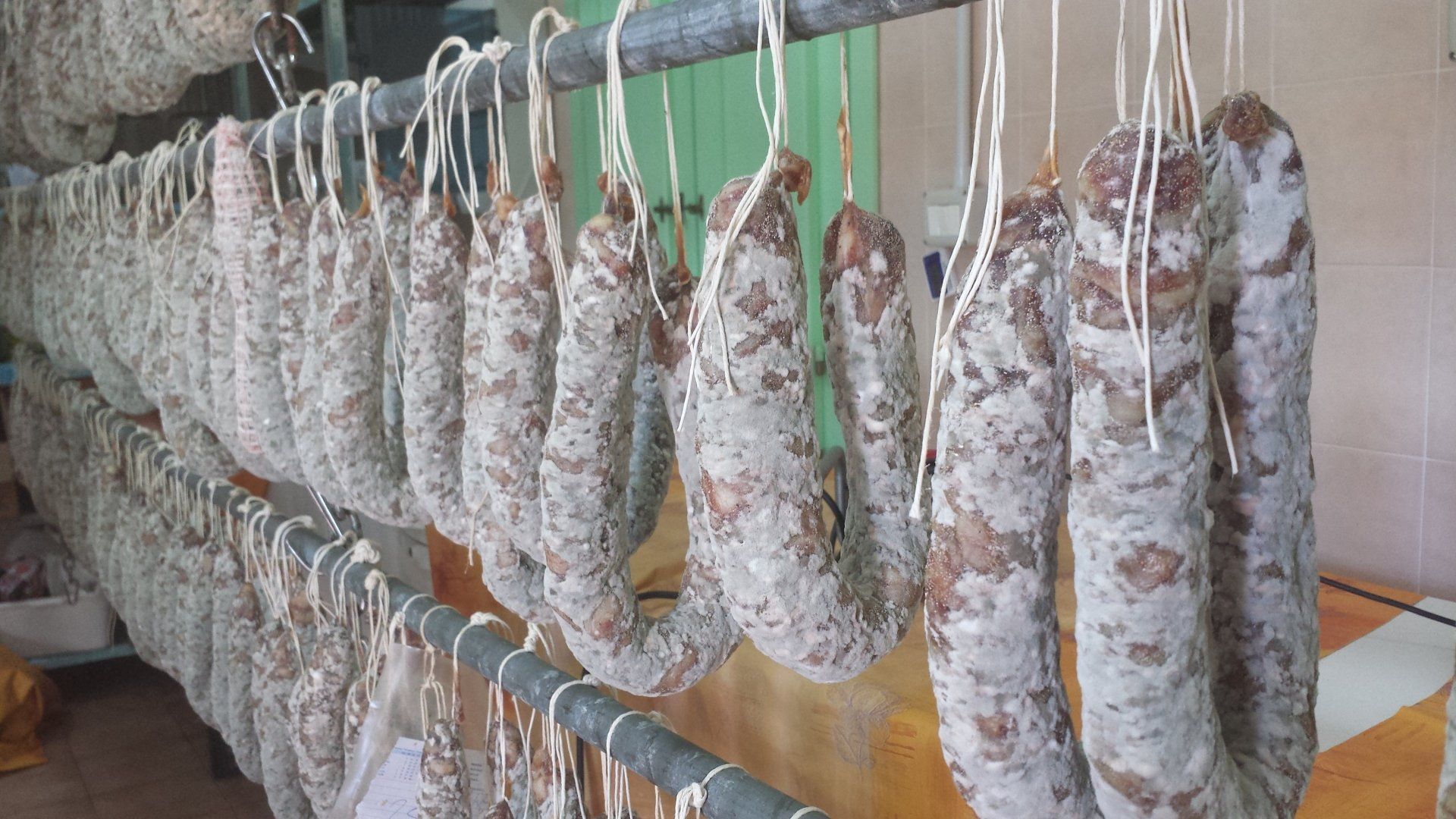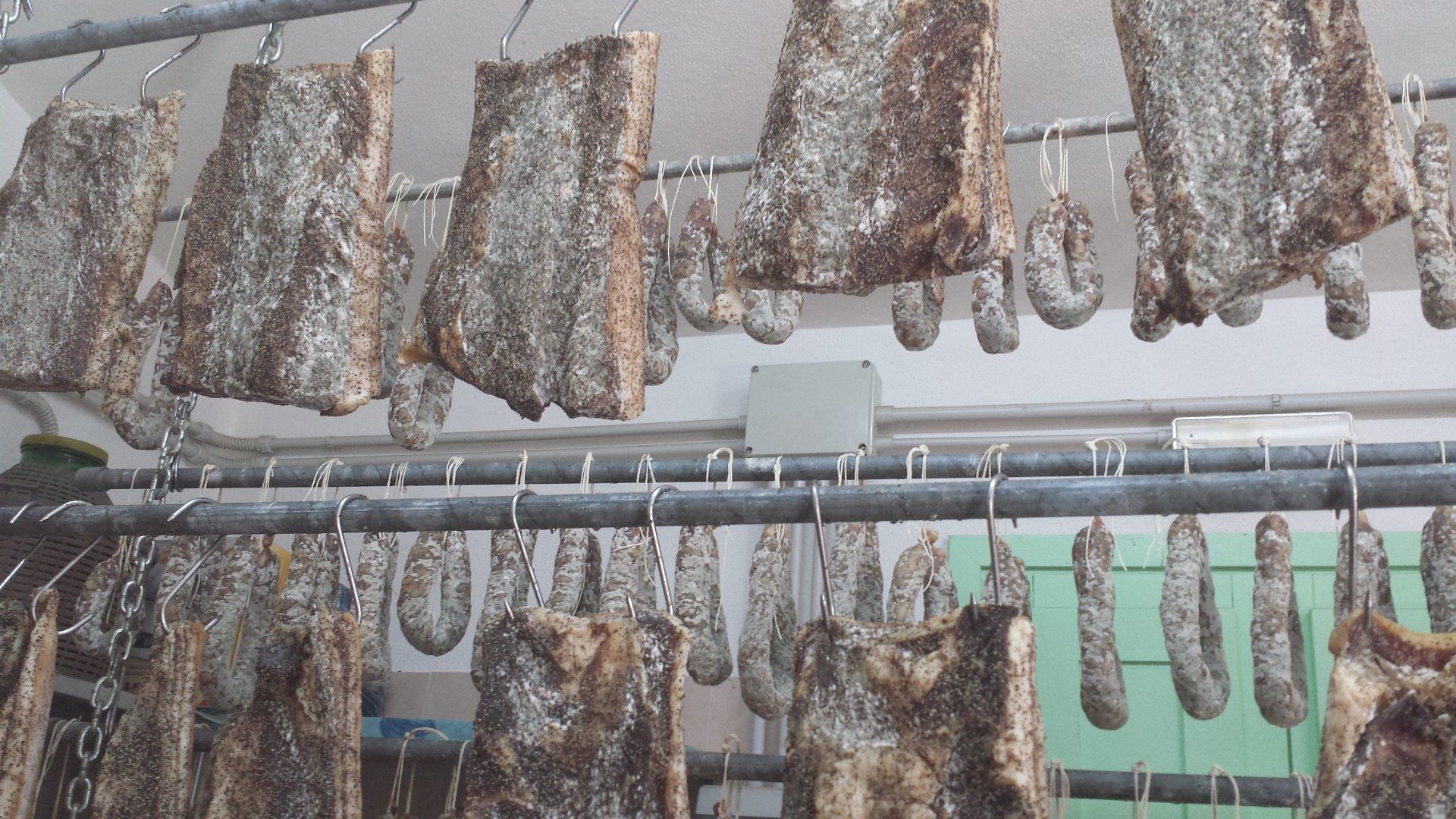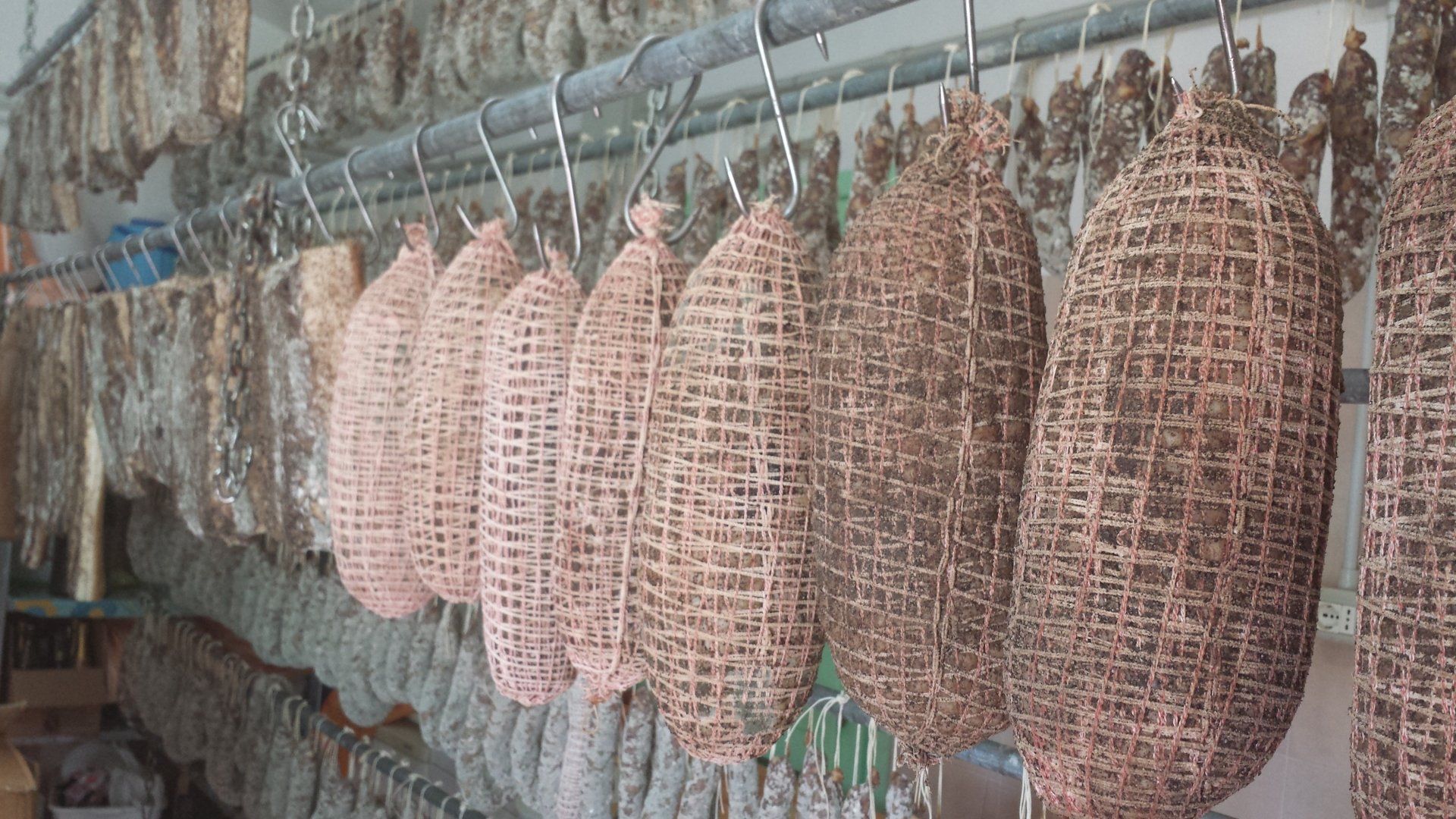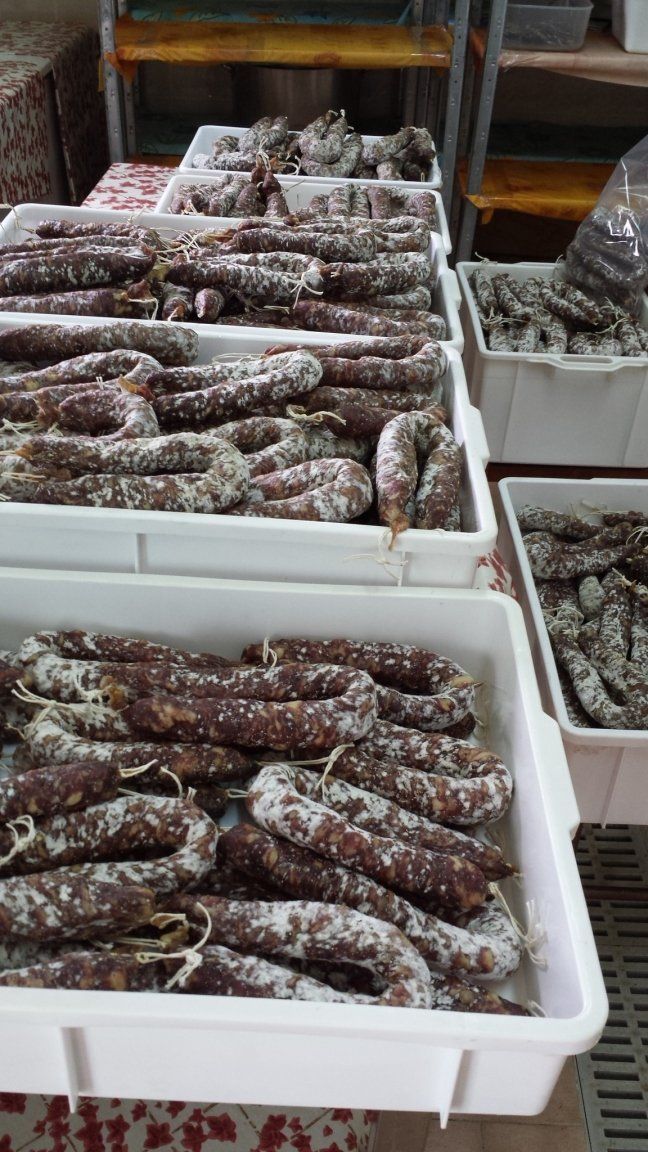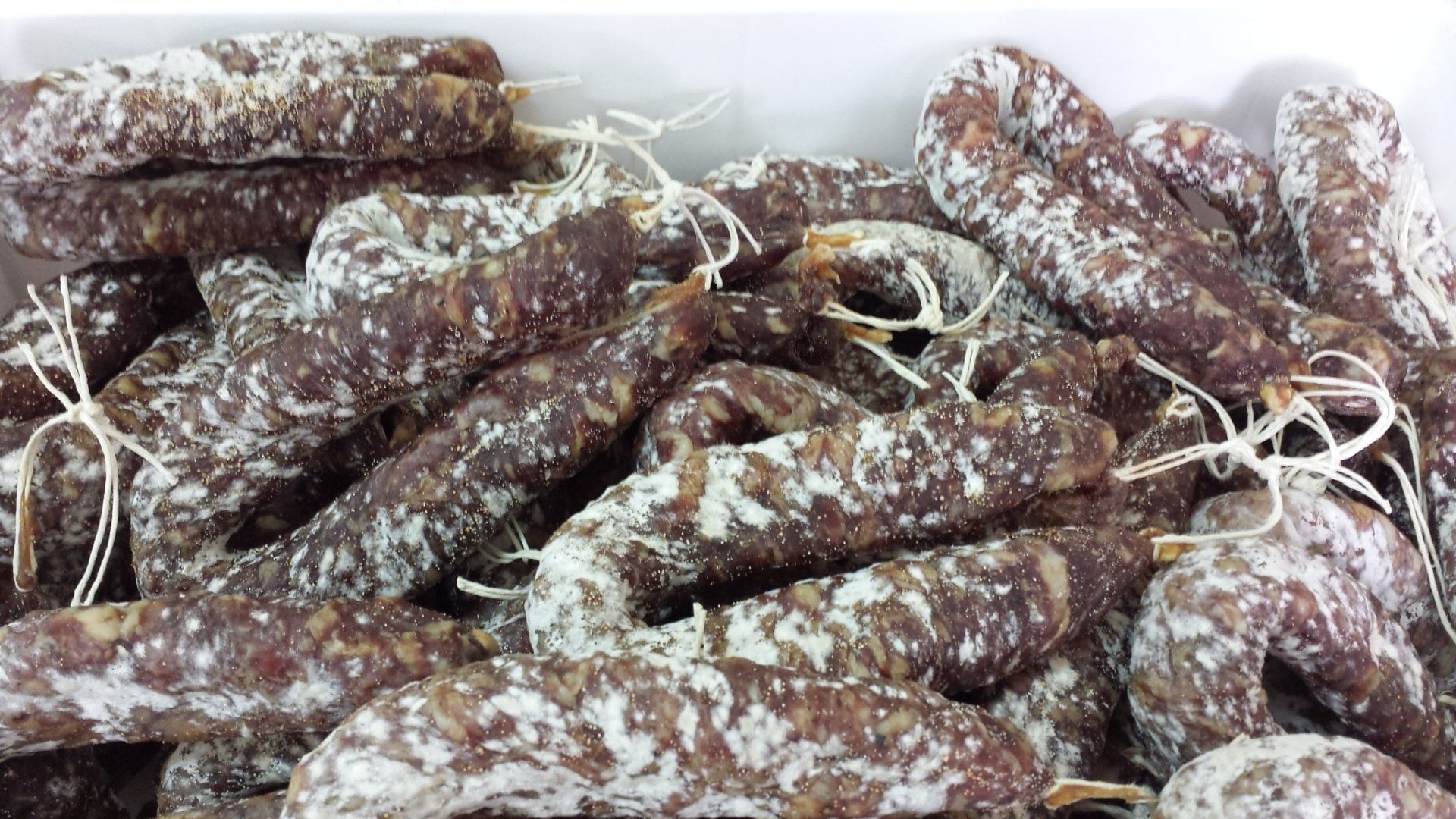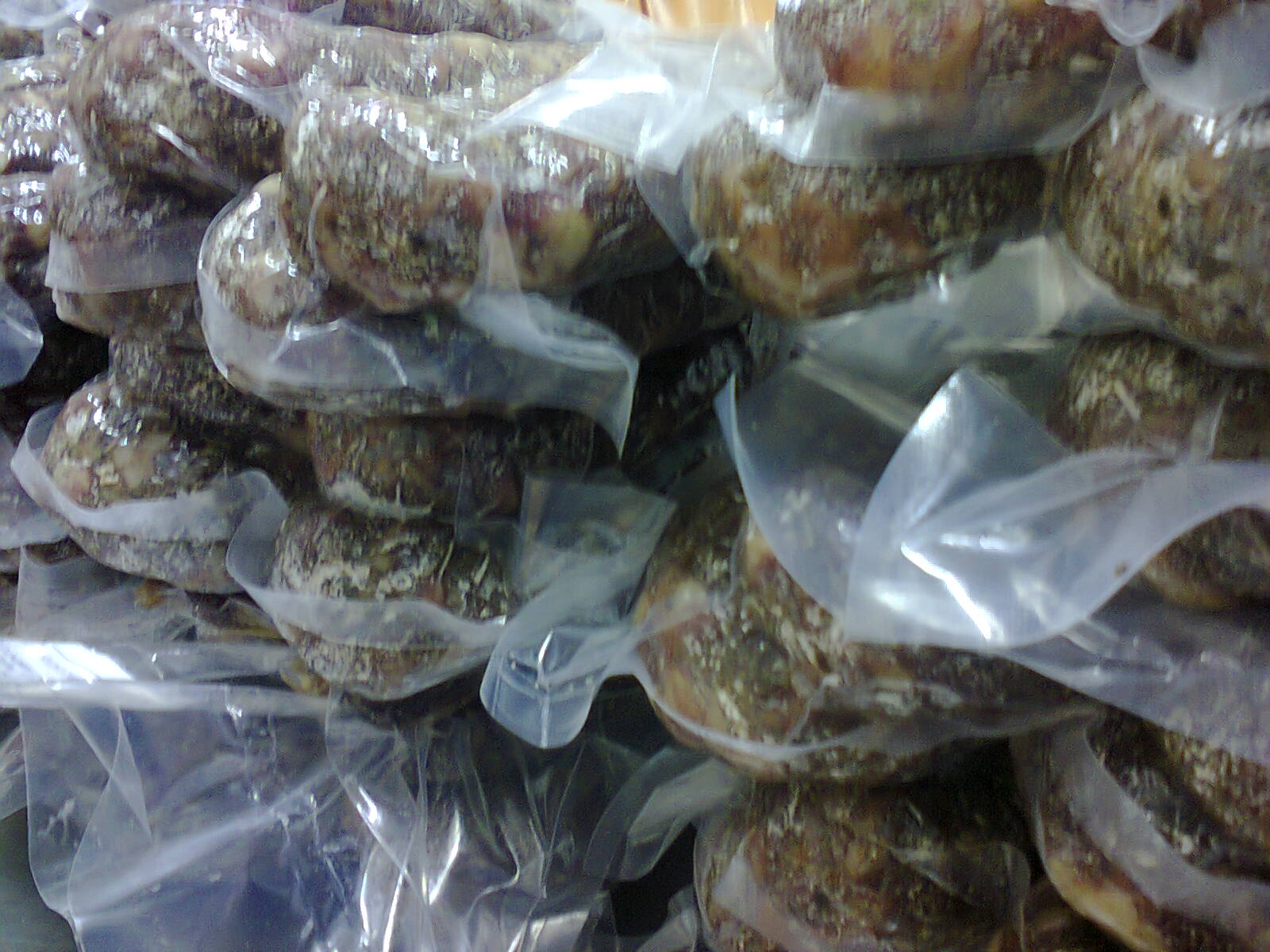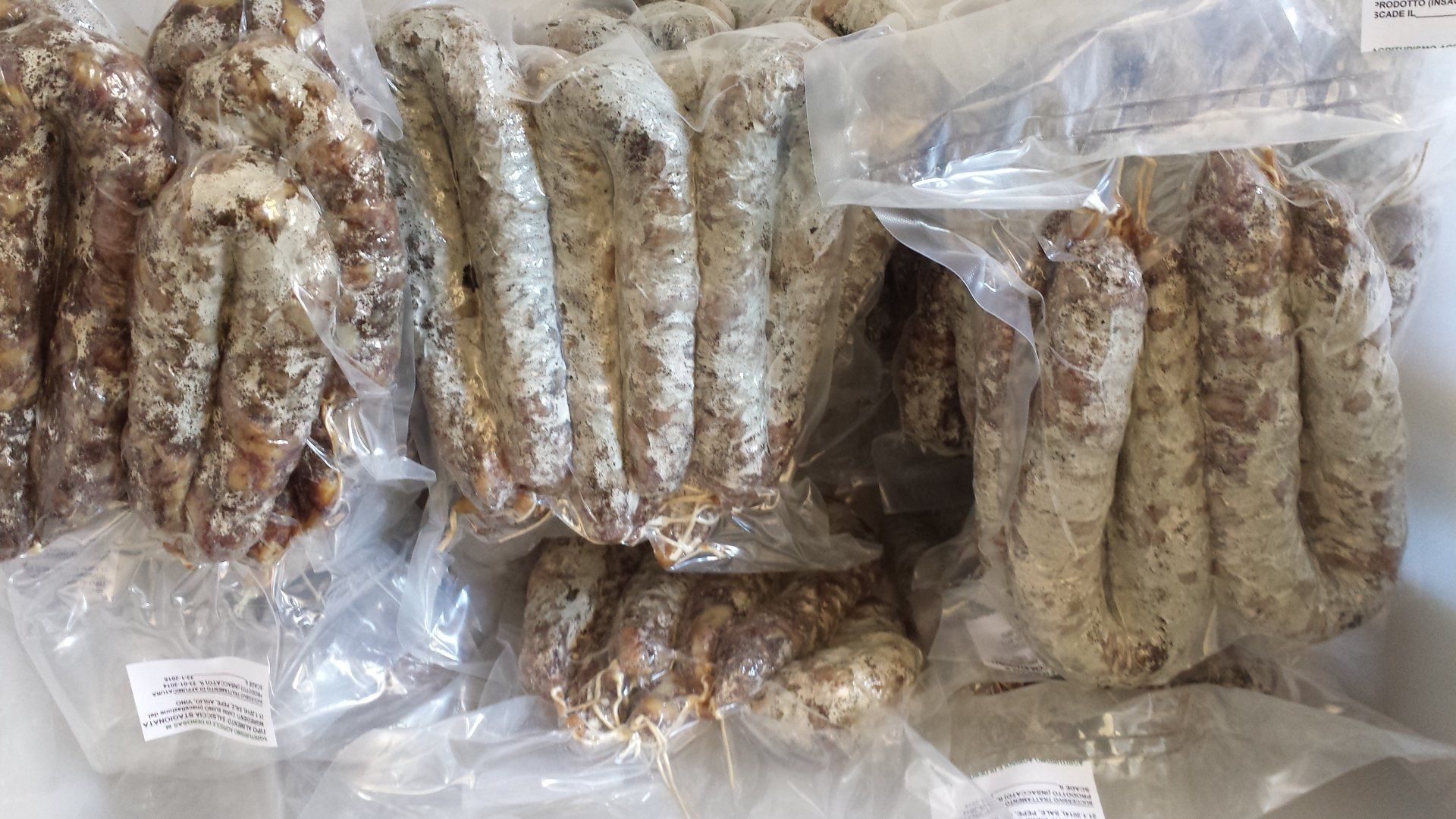The "Stazzo" cold cuts
Salami, sausage, bacon, loin and coppa
Preparation:
SALAMI The parts used are: pulp, shoulder, lard throat, bacon. The percentage of lean (70%) and fat (30%) is very important. As lean parts use the shoulder, cup and thigh. For the fat part, the pancetta. Remove the nerves and prepare the pieces to be ground. The fat part can be prepared in cubes with a knife. On 10 kg of meat, 7 are of lean and 3 of fat. Grind the lean meat to the meat grinder and place it on one side. Do the same with the fat part. Weigh and check the percentages, then season the dough. Mix all the ground obtained Prepare the dressing: (For 10 Kg of dough): 260-280 gr of salt 30 gr of black pepper 30 gr garlic red wine (on 10 Kg 1 glass of wine) Allow the mixture to rest for 12 hours. Sausage SAUSAGE Similar to salami with some differences: use 60% lean, 40% fat The parts of the pig used are: pulp, shoulder, bacon. Use lean shoulder, thigh and coppa for the fatty part of the pancetta. Remove the nerves and prepare the pieces to be ground. On 10 kg of meat, 6 are of lean and 4 of fat (pancetta). Grind the lean meat to the meat grinder and place it on one side. Do the same with the fat part. Weigh and check the percentages, then season the dough. Mix all the ground obtained Prepare the seasoning: (For 10 Kg of dough): 260-280 gr of salt 28 gr of black pepper (ground part, whole part) 30 gr garlic white wine (about 10Kg 1 glass of wine) Let rest the dough 12 hours. Bag PANCETTA STESA, LONZA, COPPA The pieces must rest hanging in a cool place for one night. Afterwards they are trimmed and salted. Procedure and serving doses (per 10 kg): 300 gr ground salt (marine) 30 g black pepper 40 g garlic white wine: 1 glass various aromas (rosemary, laurel, myrtle, juniper berries) to taste Sprinkle and massage the piece Place the piece at rest in a cool place for 7 days in an inclined plane so that the liquids can be eliminated. Once the liquids have been lost, add a handful of salt, pepper and herbs and massage. Let it rest for 3 hours. Dry the piece, bag and hang
The seasoning
It is one of the most important and delicate phases in the preparation of cured meats. Molds that form are very important for maintaining moisture, for ripening, for flavor, but they must not be black. The drafts must be avoided. When maturing, it may be necessary to wet the floor to keep the right degree of humidity. Always check the humidity and the temperature of the environment. If the molds are too abundant they can be brushed with a brush. The curing process consists of three different phases: stewing, drying and maturing. During the first phase, the duration of which can vary from one to four days depending on the size of the bag, the first large loss of water occurs, with a consequent decrease in weight. In the room where the process takes place, the exposure temperature is about 20/22 degrees. With drying, which lasts between 7 and 8 days, the water loss must be as uniform as possible in all the thickness of the dough to avoid hardening of the casing. Also in this process, which takes place in ventilated rooms, the temperature must be carefully controlled (maximum 18 ° C with humidity of 75-80%) The cold cuts must breathe without drying very quickly and it is essential to replace the air in the in this way the ingredients penetrate in every part distributing themselves uniformly inside the dough. The third and last phase, ie the seasoning is the longest of all and is subordinated to the type and size of the bag. it works in the cellar, at 10-12 ° C with 60% humidity It is important to consider that the choice of the seasoning places is fundamental for obtaining a good product, since the natural casing is an envelope that "breathes" to facilitate the passage of the smells of the seasoning and preservation areas It therefore becomes essential to choose "neutral" premises, that is to say, away from those smells or aromas that are too marked would systematically consume the salami on the table. Ensure constant aeration, for a gentle air change, avoiding absolutely 'drafts'. Under the salami (on the floor) you can pour water to maintain adequate humidity. This abrupt increase in humidity serves to trigger the growth of molds, then the microclimate is stabilized at around 10-12 degrees with a relative humidity of around 60%. Currently, the cured meats are covered with "good" molds that will contribute to the their maturation.







